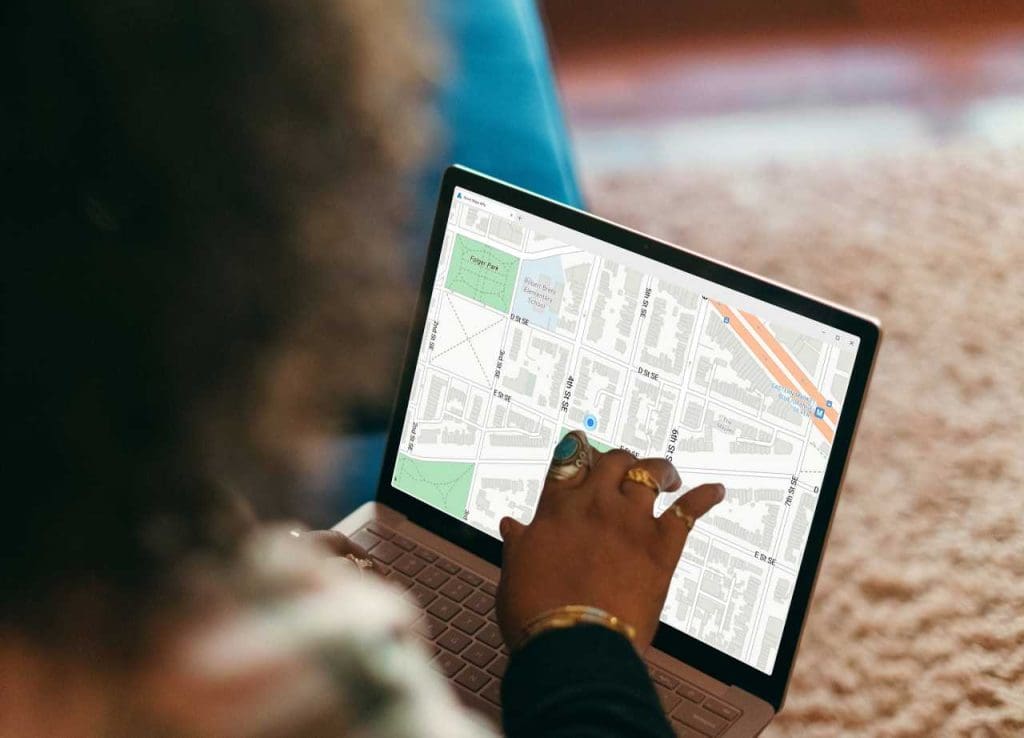
Map visualizations are critical tools in data analysis, helping businesses unlock insights hidden in location data. Azure Maps makes it simpler to create custom maps by offering powerful APIs and integration tools for developers and enterprises. Whether you’re embedding maps into a web app or creating detailed visuals in Power BI, Azure Maps enables you to customize and optimize the visualization of geospatial data to suit unique needs.
Getting Started with Azure Maps
To begin with Azure Maps, you’ll need an Azure account and a dedicated Maps subscription. Microsoft provides a streamlined setup process, making it easy to integrate mapping and visualization tools into your existing workflow. Businesses can create custom maps that are tailored to their specific goals using Azure’s intuitive tools.
Setting Up Your Azure Maps Account
First, create or log into your Microsoft Azure account. Once you’re in the Azure portal, search for “Azure Maps” in the Marketplace. Select and create a new Azure Maps account by filling in the required details like resource group, pricing tier, and account name. Once created, you’ll gain access to APIs and SDKs required to create unique maps for your projects.
Understanding the Azure Maps Interface
The Azure Maps interface provides a user-friendly dashboard with tools to streamline your work. Its main features include APIs for geospatial services, customizable map layers, and options like routing, traffic, and weather data integrations. You can also manage subscriptions, monitor usage, and integrate directly with platforms like Power BI. These capabilities make it easy to create custom maps while focusing on business logic rather than backend complexities.
Preparing and Importing Data for Map Visualizations
Geographic data is at the heart of any map visualization. Preparing your data properly ensures accurate and meaningful results.
Formatting Geographic Data
To create maps, your data must include geographic coordinates. Organize your dataset with clear latitude and longitude fields, ensuring values are in decimal degrees for accuracy. Beyond coordinates, you can include columns for categories, sizes, or values that add dimension to your maps.
Uploading Data to Power BI for Visualization
Once your data is prepared, load it into Power BI. Upload your dataset, ensuring each field is mapped correctly. The latitude and longitude fields should align with Azure Maps’ buckets for locations, while columns like “size” or “value” can enhance visual clarity by reflecting data scale or intensity. Azure Maps makes it possible to create custom maps directly within Power BI.
Creating Custom Maps in Power BI
Power BI’s Azure Maps visual makes it easy to design interactive and insightful map representations. Here’s how you can get started:
Adding Data Layers to Your Map
In Power BI, select the Azure Maps visual from the Visualizations pane. Drag your dataset’s fields into buckets such as Location (latitude/longitude), Legend, or Size. This step determines how data is layered and displayed on your map, helping you create custom maps that are both functional and visually appealing.
Using Heatmaps for Data Visualization
Need to highlight density or trends? Heatmaps are perfect for this. By adding data layers and adjusting settings like intensity or radius in the Format pane, you can turn raw data into visually compelling overlays. These tools simplify the visualization of geospatial data, making it easier to extract valuable insights.
Customizing Map Styles and Features
Azure Maps offers different map styles, from standard road layouts to satellite imagery. Customize your data visualization further by changing marker colors, adjusting transparency, or fine-tuning labels. These refinements ensure that the custom maps you create meet your exact specifications.
Advanced Map Customizations with Azure Maps APIs
For applications that demand complex mapping, Azure Maps APIs enable deeper customization and richer user engagement.
Adding Custom Shapes and Data Overlays
Use the Azure Maps Web SDK to overlay polygons, lines, or other shapes. Whether mapping sales territories or plotting delivery routes, these additional elements help you create custom maps with greater context and functionality.
Implementing Interactive Features
Interactive maps keep users engaged. With Azure Maps APIs, you can add interactivity by implementing features like clickable pins, tooltips, and pop-ups. These can display detailed information about data points, improving the overall user experience when working with custom maps.
Optimizing Large Datasets for Performance
Displaying large datasets efficiently can be challenging. Optimize performance using techniques like data aggregation and tiling. This ensures your maps remain fast and responsive, even when processing thousands of data points, allowing you to create custom maps that handle significant data loads effortlessly.
Best Practices for Creating Custom Maps
Building effective custom maps isn’t just about tools—it’s also about strategy. Here are a few guidelines to follow:
Ensuring Data Accuracy and Format
Double-check your data for accuracy. Use consistent coordinate systems and properly formatted fields to avoid misaligned or missing elements in your map. Accurate data is the foundation for creating effective custom maps that deliver actionable insights.
Improving Map Usability and Accessibility
Design your maps with clarity in mind. Use contrasting colors, clean labels, and intuitive interaction options to ensure your visualizations are easy to read and accessible to all users. This is especially important when working on the visualization of geospatial data for a wide audience.
Leveraging Azure Maps Documentation and Support
When in doubt, turn to Azure Maps’ documentation and community forums. These resources offer detailed guidance for troubleshooting and exploring advanced features, helping you create custom maps that take full advantage of Azure’s capabilities.
Benefits of Using Azure Maps Versus Competitors

Azure Maps stands out for many reasons. Here’s why it outshines competitors in delivering toolsets that allow developers to create accurate and effective geospatial data solutions:
- Seamless integration with Power BI and other Microsoft tools enables smooth data sharing and workflow optimization.
- Rich API support offers extensive customization for developing tailored mapping solutions.
- Global routing and traffic data, powered by TomTom Junction Analytics, ensures high precision for navigation and logistics use cases.
- Scalable infrastructure handles datasets of all sizes, suitable for small businesses and large enterprises alike.
- Provides accurate geocoding and reverse-geocoding services for precise location mapping.
- Advanced features include heatmaps, animation support, and interactive elements, enhancing the visualization of mapping data.
- Compatibility with third-party platforms ensures flexibility in integration and deployment.
Try Azure Maps for Free
Azure Maps empowers businesses and developers by making it easy to create custom maps and interactive visualizations. Whether you’re using Power BI or integrating APIs directly into applications, Azure Maps simplifies each step—from data preparation to advanced customization. Its robust features, scalability, and superior support set it apart, enabling you to unlock deeper insights through the visualization of geospatial data.
Explore what Azure Maps can do for your organization by visiting our official mapping and visualization page. Start building your own custom maps for free today and revolutionize how you analyze spatial data.

